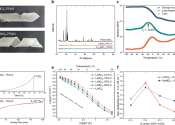Glass generally refers to hard, brittle, transparent material, such as those used for windows, many bottles, or eyewear. Examples of such solid materials include, but are not limited to, soda-lime glass, borosilicate glass, acrylic glass, sugar glass, isinglass (Muscovy-glass), or aluminium oxynitride. In the technical sense, glass is an inorganic product of fusion which has been cooled through the glass transition to a rigid condition without crystallizing. Many glasses contain silica as their main component and glass former.
In the scientific sense the term glass is often extended to all amorphous solids (and melts that easily form amorphous solids), including plastics, resins, or other silica-free amorphous solids. In addition, besides traditional melting techniques, any other means of preparation are considered, such as ion implantation, and the sol-gel method. However, glass science and physics commonly includes only inorganic amorphous solids, while plastics and similar organics are covered by polymer science, biology and further scientific disciplines.
Glass plays an essential role in science and industry. The optical and physical properties of glass make it suitable for applications such as flat glass, container glass, optics and optoelectronics material, laboratory equipment, thermal insulator (glass wool), reinforcement fiber (glass-reinforced plastic, glass fiber reinforced concrete), and art.
The term glass developed in the late Roman Empire. It was in the Roman glassmaking center at Trier, Germany, that the late-Latin term glesum originated, probably from a Germanic word for a transparent, lustrous substance.









